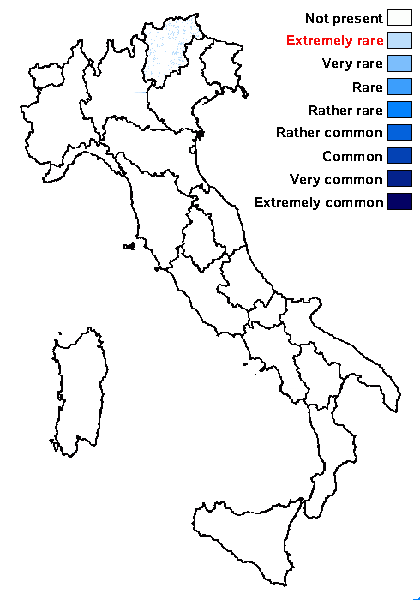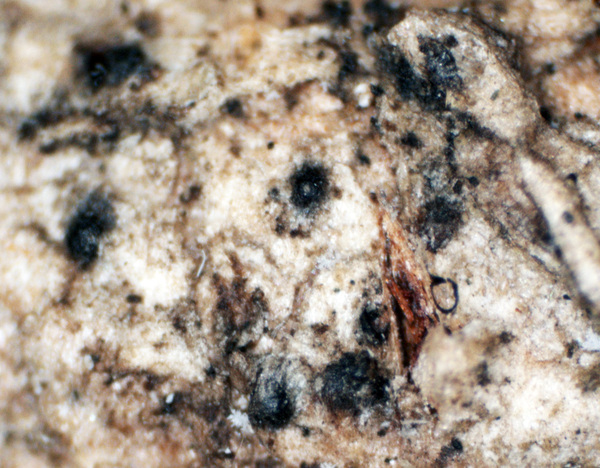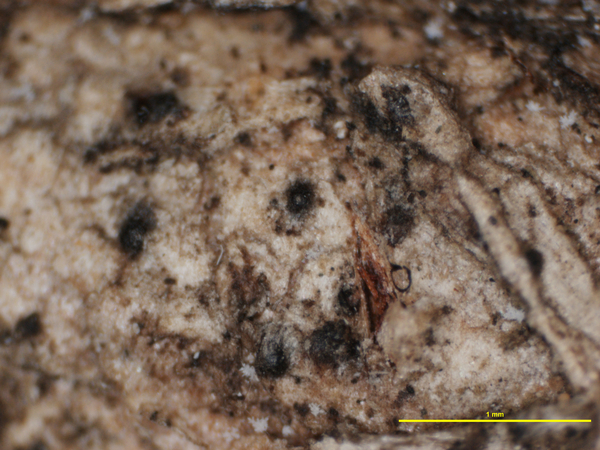Arthopyrenia arnoldii Zahlbr.
Annln K. K. naturh. Hofmus. Wien, 16: 80, 1901
Synonyms:
Distribution: N - TAA (Nimis & al. 2018).
Description: Thallus crustose, thinly episubstratic, continuous, whitish, sometimes poorly evident, doubtfully lichenized. Perithecia black, shiny, 0.1-0.25 mm across, hemispherical or flattened at top. Involucrellum dimidiate, K-; exciple dimidiate, developed only in the upper half of the perithecium; pseudoparaphyses persistent, branched and anastomosing. Asci 4-8-spored, ovoid-elongate, fissitunicate, 55-65 x 10-15 µm. Ascospores 1-septate, not constricted at septum, ellipsoid to oblong, with more or less equal cells, hyaline, 14-16(-18) x 5-8 µm, surrounded by a rather thick perispore. Pycnidia black. Conidia bacilliform, straight, 3.5-4 x c. 1 µm. Photobiont probably absent. Spot tests: thallus K-, C-, KC-, P-, UV-. Chemistry: without lichen substances. Note: a poorly known species based on a type from South Tyrol, where it was found on branches of Larix.
Growth form: Fungus
Substrata: bark
Reproductive strategy: mainly sexual
Commonnes-rarity: (info)
Alpine belt: absent
Subalpine belt: extremely rare
Oromediterranean belt: absent
Montane belt: absent
Submediterranean belt: absent
Padanian area: absent
Humid submediterranean belt: absent
Humid mediterranean belt: absent
Dry mediterranean belt: absent

Predictive model
Growth form: Fungus
Substrata: bark
Reproductive strategy: mainly sexual
Commonnes-rarity: (info)
Alpine belt: absent
Subalpine belt: extremely rare
Oromediterranean belt: absent
Montane belt: absent
Submediterranean belt: absent
Padanian area: absent
Humid submediterranean belt: absent
Humid mediterranean belt: absent
Dry mediterranean belt: absent

Predictive model
 INDEX FUNGORUM
INDEX FUNGORUM
 GBIF
GBIF
 DOLICHENS
DOLICHENS



